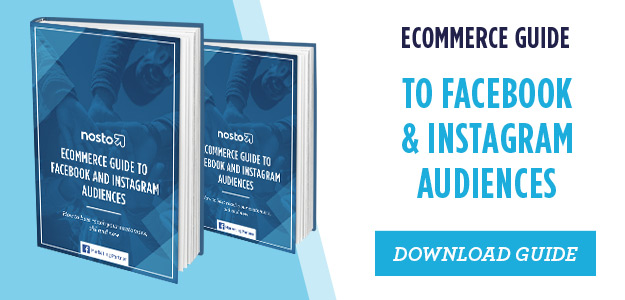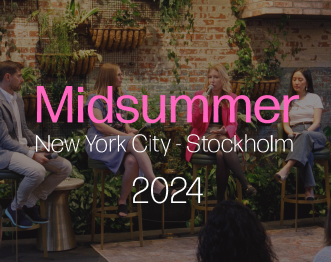3 Red Flags That Hurt Your Facebook and Instagram Ad Performance
So you’ve committed to setting up your Facebook and Instagram ad campaign, followed a detailed, step-by-step guide to optimize your audiences (i.e. you’ve read through our Ecommerce Guide to Facebook and Instagram Audiences which pretty much lays it all out for you) and are ready to sit back and let the leads roll in.
But if you’re someone who hasn’t followed our guide to ad campaigns (we won’t judge; better late than never), you may be overlooking some crucial details that can prevent you from yielding the best possible results.
To get you started, here are 3 red flags you should watch for when optimizing your ad audiences on Facebook and Instagram.
1. Audience Size
When setting up your ad audience, the size of the audience you’re trying to target plays a huge role in your ad campaign’s success. And that means finding the ideal sweet spot based on your budget and brand initiatives. Here are two scenarios where aiming too high–or too low–will damage your ad campaign efforts.
Scenario #1: The massive audience outreach.
Consider a women’s clothing brand with an annual budget of a few thousand dollars to spend on ads. This company wants to target all female Facebook users in a particular region.
The downside: The company’s target audience is huge, but their budget is not–which means they will have burned through their annual budget before even scratching the surface of their target audience.
The lesson: The idea of targeting anyone and everyone on social media with your ad campaign may sound like an attractive idea. If your budget allows it, setting a large audience is excellent for increasing your outreach. But if you’ve allocated a specific budget to ads, then strategy is key. Consider targeting a smaller subset of users by segmenting based on affinities to certain categories, brands, lifetime value, etc. Upload customer emails and phone numbers to Facebook to target customers who have already expressed interest in you. By doing this, your ads can target a smaller number of people–but the right people.
Scenario #2: The small audience outreach.
Consider the same women’s clothing brand, but this time they want to be much more conservative with their targeting. They’ve targeted a few thousand people in their ad campaign: about 1,000 people see the ad, 30-50 people have clicked on it and visited the site and 2 people have actually purchased something.
The downside: The company did not consider targeting consumers who were actually interested or have shown past interest in their product.
The lesson: Re-targeting existing customers is an effective way to reap the benefits of a smaller audience (we’re fans of the “bottom of the funnel” approach). Also, consider creating lookalike audiences based on recent fans of your Facebook page and recent buyers. Creating a lookalike audience based on these two attributes is a solid way of reaching new prospects, on a smaller scale.
2. Ad Fatigue
Facebook and Instagram custom audiences and life in general share one significant philosophy: all good things must come to an end. In the ad campaign world, this is called ad fatigue.
While we’re on a roll with the philosophical references, here’s another important one to remember:
Ad fatigue is like a child throwing a temper tantrum: It’s completely normal, but it’s important to be able to identify when it’s happening.
Ad fatigue commonly occurs when an ad has been shown to the same audience more than a few times. Here’s a brief overview of how an ad reaches ad fatigue. (Note: this is assuming you’ve optimized for conversions and are paying per thousand impressions that your ads appear):
- Facebook and Instagram show your ads to a subset of users in your target who are most likely to conduct the desired action.
- Over time, the ad will be shown to a new batch of users in your target audience.
- The ad then reverts back to the first batch of users who did not convert.
- Now that your ad has been shown to everyone in your audience. This is when ad fatigue starts to kick in.
The lesson: Ad fatigue is not entirely avoidable, but you can slow down the process in a few simple ways:
1. Review the ad’s creative and re-launch for the same audience.
2. Target a new audience.
3. Ad relevance score
An ad relevance score is Facebook’s way of determining which ads should be shown to which audience. The more relevant the ad, the higher the score will be. Simple concept, right? Now comes the tricky part.
An ad with a low relevance score is a bright red flag for your campaign. As the relevance score decreases, your CPC (cost-per-click) increases–so you’re essentially increasing your ad spend on an ineffective campaign. It also signals any (or all) of the following issues:
- You’re not targeting the right audience for your campaign.
- Your ad campaign’s messaging and/or imagery may not be the right fit for your audience.
- You’ve shown the ad for too long and your audience has grown tired of it (i.e. ad fatigue).
The lesson: Avoid a consistently low ad relevance score by honing in on the issues above. One effective strategy is to perform A/B testing on your ads. Identify patterns in ads with higher scores, and adjust your low-score campaigns based on these results.
So we’ve identified a few key potential red flags when setting up your Facebook and Instagram ad campaigns. Now keep the momentum going! Download our Ecommerce Guide to Facebook and Instagram Audiences, where we’ve outlined additional red flags to keep in mind. It also includes a more in-depth approach to personalizing your ad campaign with minimal head bashing (and maximum high-fiving).





